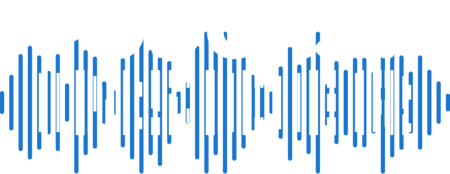Last week the IAB, in partnership with a consortium of 23 companies within the podcasting industry referred to as the Podcast Technical Working Group, released a set of guidelines meant to shape the use of ad metrics by podcasters, podcast service providers, and others in the space. In this Q&A, Blubrry/RawVoice CEO Todd Cochrane tells us more about the document and what it means for podcasters.
Q: How many companies participated in the creation of this document?
A: “In total, 23 companies in the podcasting space participated in the creation of this document, including Blubrry and other major players like Google, Libsyn, Nielsen, Westwood One, and NPR. It was quite the process: as we are all passionate about what we do, there were a lot of opinions to sort through. But after 20 months of hard work by all parties, we were able to reach a set of standards we could all agree to.”
Q: There are a number of podcast companies that did not participate, why is that?
A: “I really cannot speak for other companies on why they may not have joined and participated, but we choose to become involved as we have 11 years of experience in podcast metrics, and wanted to make sure the podcasters we represent had a voice and seat at the table. That said, we hope non-participating podcast companies will still widely adopt the guidelines as that would help measurement data come into alignment pretty closely across the industry.”
Q: What guidelines are included?
A: “The document mainly focuses on how downloads are measured, the criteria around that, and how to count partials and total downloads. For example, a download of an episode from the same IP address can’t be counted more than twice – that kind of thing. They aren’t necessarily rules, but guidelines. If everyone sticks to those basic tenets as outlined in the addendum of the document, it’s going to go a long way toward leveling the playing field among companies in the industry.”
Q: How in-depth are the guidelines?
“We’ve heard a little bit of feedback from some podcasters that say the guidelines doesn’t go super deep and there’s no certification process. But the IAB isn’t an enforcement or auditing organization. They are more interested in making sure a set of guidelines can be put forth with information that will help solidify the terminology and provide guidelines that make the digital advertising space more navigable. You could never get 23 companies to agree to a rigid set of standards, but it’s a good first document that we worked hard to unite on.”
Q: What isn’t covered in the document?
A: “Neither filtering or fraud are covered in detail in the guidelines it’s mentioned, and we think those are both crucial things for podcasters and podcast service companies to be paying attention to. Hopefully, we can dig deeper on the next revision of this document. For example, we at Blubrry were recently able to identify podcasts that were using multiple Twitter accounts to directly link to new episode media files. Bots were picking up those media links and downloading the file many times. Because we have such a huge and wide data set, and because most podcasts are consumed in a predictable way, when we come across something weird it sticks out like a sore thumb and we can see it very easily in the data. It was a gaming of the system that was unfairly inflating traffic for the podcasters using that tactic. Because we are looking for that kind of thing and have strong algorithms set up for fraud, we were able to find it and put in filters to prevent it. If some podcast service providers offer that kind of filtering and others don’t, there will still be discrepancies between their numbers.”
Q: So how can podcasters and media buyers get a complete picture of what’s going on?
A: “By studying both the new IAB Podcast Measurement guidelines and the IAB Audio Buyers Guide, which is being updated by the IAB right now, podcasters and media buyers will both be using the same terminology so there’s no confusion. Everyone will be singing from the same page, as long as everyone adopts the guidelines. It’ll still be up to the media buyer to ask questions about how the service provider the podcaster is using measures its traffic, though. Blubrry has been completely in compliance with the guidelines, and then some, since we developed almost the same set of standards in 2008 with the Association of Downloadable Media. At some point, we’ll probably come out with more information, and share deeper data with the podcasting community as needed.”
Q: What about downloads – how can they be accurately measured?
A: “As we recently stated, 60% of podcasts are still downloaded on-demand. But it’s a a myth that those downloads can’t be measured. Many podcasters and media buyers are under the impression that there’s a black hole, and once podcasts are downloaded, there’s no way to know if they are ever listened to or not. But there is still a story to be told based on trending data. We can tell a lot more about how those podcasts are consumed than many people believe. After 3-5 episodes in a row aren’t listened to, iTunes and the iOS Podcast App will stop downloading that show. And since iTunes / iOS is still so dominant, we know that if a show is still downloading, it’s being widely listened to across a period of time. Podcast listening is different – it’s not like a banner ad, but more like the radio equivalent of the home DVR. Advertisers won’t get all the answers, but when these guidelines are adopted, they will get numbers that are consistent across all service providers. Everyone listening to podcast has grown up with a DVR and podcast consumption is like most media we consume today – “on demand.”
Download the IAB Ad Metrics Guidelines





